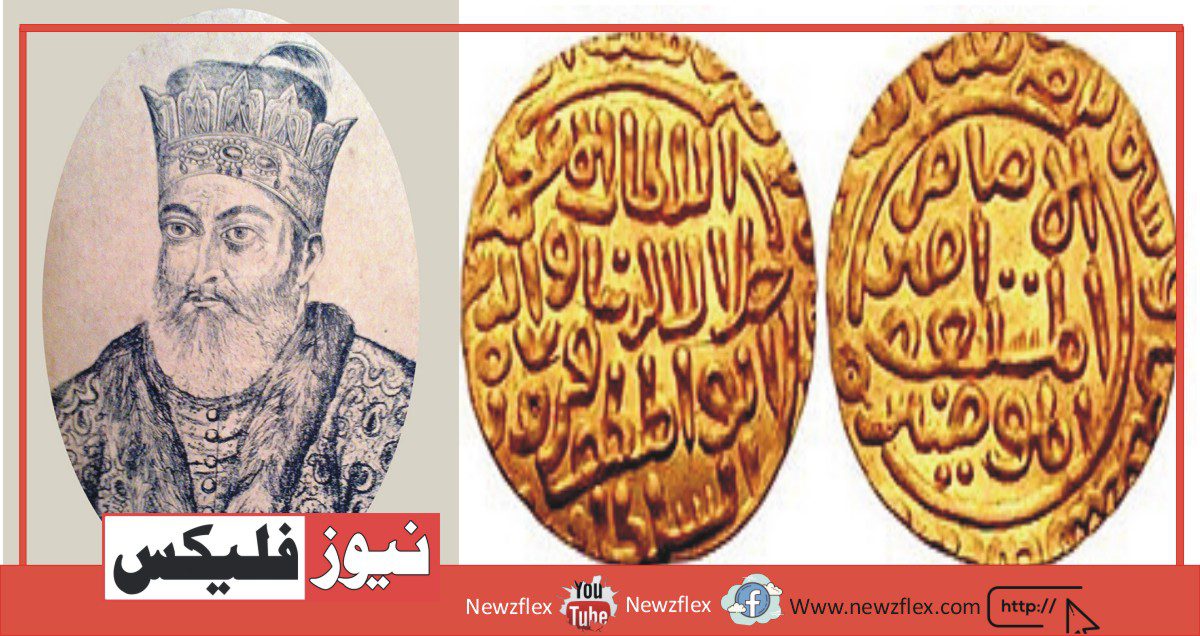
Biography of Gabriel Garcia Marquez
Colombian novelist, journalist, and Nobel laureate Gabriel García Márquez (1927–2014) is well-known for creating the literary form known as magical realism and for his contributions to Latin American literature. One Hundred Years of Solitude, his most well-known book is regarded as one of the best novels of the 20th century and has had a significant influence on literature throughout the world.
Childhood
On March 6, 1927, Gabriel García Márquez was born in Aracataca, a small village in Colombia’s Caribbean area. He was the child of Luisa Santiaga Márquez and Gabriel Eligio García. His grandparents were important figures in García Márquez’s early life, shaping his upbringing and inspiring his writing with tales of local history and mythology.
After starting his studies in a nearby school, García Márquez was sent to Bogotá to continue his education. He studied law at the National University of Colombia, but he soon switched to journalism and literature—sectoral interests that would later influence his work.
Early Professional Life
García Márquez was a journalist and editor in the 1950s, working for several Colombian and international newspapers and magazines. His investigative reporting and social and political commentary were regular features of his journalistic work. He began writing fiction during this time as well, and in 1955 he published his first book, Leaf Storm, a collection of short stories that served as the launchpad for his literary career.
Early works by García Márquez, such as In Evil Hour (1962) and No One Writes to the Colonel (1961), made him a prominent figure in Latin American literature. Around this time, his writing started to show the distinctive fusion of fantasy and reality that would later come to define his style.
Innovation and Fantastical Realism
The breakthrough for García Márquez was the 1967 release of One Hundred Years of Solitude. Set in the made-up village of Macondo, this book follows the narrative of the Buendía family throughout several generations and is praised for its creative use of magical realism, a genre that combines fantasy aspects with realistic surroundings. Widespread praise for the book made García Márquez a well-known author in the world of literature.
After the publication of One Hundred Years of Solitude, García Márquez went on to publish some other well-known books, such as Chronicle of a Death Foretold (1981), which was based on a true story of an honour killing in Colombia, and The Autumn of the Patriarch (1975), a novel that explored the life of a despotic dictator. His unique storytelling technique and talent for fusing intricate, multi-layered stories with social and political commentary were further demonstrated in these pieces.
Participation in Politics and Later Work
Engaged in politics and social issues, García Márquez frequently sided with leftist causes. His works and public persona were a reflection of his political engagement and views. Among the leaders of Latin America he supported and was friends with was Fidel Castro of Cuba. García Márquez received the Nobel Prize in Literature in 1982 for his contributions, which were valued for their creative energy and significant literary influence. His work gained international attention thanks to the Nobel Prize, which also solidified his status as a major figure in literary history.
Throughout his life, García Márquez wrote and published some books, including Love in the Time of Cholera (1985), a novel that explored issues of ageing and love, and The General in His Labyrinth (1989), a fictionalised depiction of Simón Bolívar’s last years. News of a Kidnapping (1996), a non-fiction account of a string of kidnappings by drug gangs in Colombia, was another of his latter works.
Individual Life and Death
Rodrigo and Gonzalo, García Márquez’s two sons, were born to the couple after their 1958 marriage to Mercedes Barcha. His connection with Mercedes played a major role in both his personal and professional lives, and she was an invaluable support system throughout his life and career.
Early in the new millennium, Gabriel García Márquez’s health started to deteriorate. He spent several years residing in Mexico City, where he kept up his literary career and continued to work on his writing. At the age of 87, García Márquez departed from this life on April 17, 2014, in Mexico City.
History
The impact of Gabriel García Márquez on literature is significant and long-lasting. Millions of people worldwide have read his books, which have been translated into other languages thanks to his inventive use of magical realism. His skill at telling stories, his research into Latin American history and culture, and his capacity to make the extraordinary seem ordinary have had a profound effect on literature and society around the world.
Considered one of the most influential authors of the 20th century, García Márquez’s work continues to influence readers and writers of new generations.
گیبریل گارسیا مارکیز کی سوانح عمری
گیبریل گارسیا مارکیز (1927–2014) کولمبیا کے ایک ناول نگار، صحافی، اور نوبل انعام یافتہ تھے جو لاطینی امریکی ادب میں اپنی شراکت اور جادوئی حقیقت نگاری کے نام سے مشہور ادبی صنف کی ترقی کے لیے مشہور تھے۔ ان کی سب سے مشہور تصنیف تنہائی کے ایک سو سال کو بیسویں صدی کے عظیم ناولوں میں سے ایک سمجھا جاتا ہے اور اس نے عالمی ادب پر گہرا اثر ڈالا ہے۔
ابتدائی زندگی
گیبریل گارسیا مارکیز 6 مارچ 1927 کو کولمبیا کے کیریبین علاقے کے ایک چھوٹے سے قصبے اراکاٹاکا میں پیدا ہوئے۔ وہ گیبریل ایلجیو گارسیا اور لوئیسا سانتیاگا مارکیز کا بیٹا تھا۔ گارسیا مارکیز کے ابتدائی سال ان کے دادا دادی سے متاثر تھے، جنہوں نے ان کی پرورش میں اہم کردار ادا کیا اور جن کی مقامی داستانوں اور تاریخ کی کہانیاں بعد میں ان کی تحریر کو متاثر کریں گی۔
گارسیا مارکیز نے اپنی تعلیم ایک مقامی اسکول میں شروع کی لیکن بعد میں اسے مزید تعلیم کے لیے بوگوٹا بھیج دیا گیا۔ اس نے کولمبیا کی نیشنل یونیورسٹی میں تعلیم حاصل کی، جہاں اس نے ابتدا میں قانون کی تعلیم حاصل کی لیکن جلد ہی صحافت اور ادب کی طرف متوجہ ہو گئے، ایسے شعبوں سے جو اس کے کیریئر کو تشکیل دیں گے۔
ابتدائی کیریئر
سال 1950 کی دہائی میں، گارسیا مارکیز نے کولمبیا اور بیرون ملک مختلف اخبارات اور رسائل کے لیے بطور صحافی اور ایڈیٹر کام کیا۔ ان کے صحافتی کام میں اکثر تحقیقاتی رپورٹنگ اور سیاسی اور سماجی مسائل پر تبصرہ شامل تھا۔ اس عرصے کے دوران، انہوں نے افسانہ لکھنا بھی شروع کیا، اپنی پہلی کتاب، لیف سٹارم (1955) شائع کی، جو مختصر کہانیوں کا ایک مجموعہ ہے جس نے ان کے ادبی کیریئر کا آغاز کیا۔
گارسیا مارکیز کے ابتدائی ناول، بشمول نو ون رائیٹس ٹو دی کرنل (1961) اور ان ایول آور (1962)، نے انہیں لاطینی امریکی ادب میں ایک اہم آواز کے طور پر قائم کیا۔ اس دوران ان کی تحریر میں حقیقت اور فنتاسی کے انوکھے امتزاج کی نمائش شروع ہو گئی جو ان کے دستخطی انداز بن جائے گی۔
پیش رفت اور جادوئی حقیقت پسندی۔
گارسیا مارکیز کی پیش رفت 1967 میں تنہائی کے ایک سو سال کی اشاعت کے ساتھ ہوئی۔ یہ ناول، ماکونڈو کے افسانوی قصبے میں ترتیب دیا گیا ہے، بوینڈیا خاندان کی کثیر نسل کی کہانی بیان کرتا ہے اور اسے جادوئی حقیقت پسندی کے اختراعی استعمال کے لیے منایا جاتا ہے۔ جو تصوراتی عناصر کو حقیقت پسندانہ ترتیبات کے ساتھ ملا دیتا ہے۔ اس ناول نے بڑے پیمانے پر پذیرائی حاصل کی اور گارسیا مارکیز کو عالمی ادب میں ایک اہم شخصیت کے طور پر قائم کیا۔
ون ہنڈریڈ ایئرز آف سولیٹوڈ کی کامیابی کے بعد، گارسیا مارکیز نے کئی دیگر قابل ذکر تصانیف شائع کیں، جن میں دی آٹم آف دی پیٹریارک (1975)، ایک جابر آمر کی زندگی کو تلاش کرنے والا ناول، اور کرانیکل آف ڈیتھ فورٹولڈ (1981)، ایک داستان شامل ہیں۔ کولمبیا میں غیرت کے نام پر قتل پر مبنی۔ یہ کام اس کے مخصوص بیانیہ انداز اور سماجی اور سیاسی تبصروں کے ساتھ پیچیدہ، تہہ دار کہانیوں کو بُننے کی صلاحیت کو ظاہر کرتے رہے۔
سیاسی مصروفیت اور بعد میں کام
گارسیا مارکیز سیاست اور سماجی مسائل میں گہرائی سے ملوث تھے، اکثر خود کو بائیں بازو کے اسباب سے ہم آہنگ کرتے تھے۔ ان کے سیاسی عقائد اور سرگرمی ان کی تحریروں اور عوامی زندگی میں جھلکتی تھی۔ وہ کیوبا کے فیڈل کاسترو سمیت لاطینی امریکی رہنماؤں کے دوست اور حامی تھے۔
سال 1982 میں، گارسیا مارکیز کو ان کے کام کے لیے ادب کا نوبل انعام دیا گیا، جسے اس کی تخیلاتی طاقت اور ادب پر اس کے گہرے اثرات کے لیے تسلیم کیا گیا۔ نوبل انعام نے ان کے کام کو بین الاقوامی سطح پر پہچان دلائی اور ادبی تاریخ میں ان کا مقام مزید مستحکم کیا۔
گارسیا مارکیز نے اپنی زندگی بھر لکھنا اور شائع کرنا جاری رکھا، جس میں لو ان دی ٹائم آف کولیرا (1985) جیسی تخلیقات، محبت اور بڑھاپے کے موضوعات کو تلاش کرنے والا ایک ناول، اور دی جنرل ان ہز لیبیرینتھ (1989)، فائنل کا ایک افسانوی بیان۔ سائمن بولیوار کے سال۔ ان کے بعد کے کاموں میں نیوز آف اے کڈنیپنگ (1996) بھی شامل تھا، جو کولمبیا میں منشیات کے کارٹلز کے اغوا کے سلسلے کا ایک غیر افسانوی اکاؤنٹ ہے۔
ذاتی زندگی اور موت
گارسیا مارکیز نے 1958 میں مرسڈیز بارچا سے شادی کی، اور اس جوڑے کے دو بیٹے، روڈریگو اور گونزالو تھے۔ مرسڈیز ان کی زندگی اور کیریئر میں ایک اہم سہارا تھی، اور ان کے تعلقات ان کی ذاتی اور پیشہ ورانہ زندگی کا مرکزی حصہ تھے۔
گیبریل گارسیا مارکیز کی صحت 2000 کی دہائی کے اوائل میں گرنا شروع ہوئی۔ وہ میکسیکو سٹی میں کئی سالوں تک مقیم رہے، جہاں انہوں نے اپنی تحریر پر کام جاری رکھا اور اپنی ادبی موجودگی کو برقرار رکھا۔ گارسیا مارکیز کا انتقال 17 اپریل 2014 کو میکسیکو سٹی میں 87 سال کی عمر میں ہوا۔
میراث
ادب پر گیبریل گارسیا مارکیز کا اثر گہرا اور پائیدار ہے۔ جادوئی حقیقت پسندی کے ان کے جدید استعمال نے جدید افسانے کے منظر نامے کو بدل دیا، اور ان کے کاموں کا متعدد زبانوں میں ترجمہ کیا گیا ہے اور دنیا بھر میں لاکھوں لوگوں نے پڑھا ہے۔ اس کی کہانی سنانے کی صلاحیت، لاطینی امریکی ثقافت اور تاریخ کی کھوج، اور غیر معمولی چیزوں کو دنیا کے ساتھ ملانے کی اس کی صلاحیت نے ادب اور عالمی ثقافت دونوں پر دیرپا اثر چھوڑا ہے۔
گارسیا مارکیز کو بیسویں صدی کے سب سے اہم مصنفین میں سے ایک کے طور پر یاد کیا جاتا ہے، اور ان کی میراث قارئین اور مصنفین کی نئی نسلوں کو متاثر کرتی رہتی ہے۔








